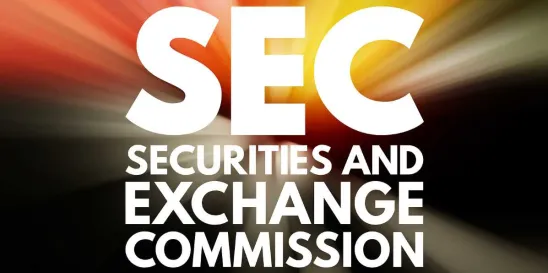On January 24, 2024, the U.S. Securities and Exchange Commission (SEC) adopted final rules (the “Final Rules”) related to special purpose acquisition companies (SPACs) and de-SPAC transactions.[1] The Final Rules are intended to provide enhanced protections for investors in the initial public offerings (IPOs) of SPACs and the subsequent business combination transactions of SPACs with private operating companies (“de-SPAC transactions”). By expanding the disclosure requirements for SPAC IPOs (on registration statement Forms S-1 and F-1) and de-SPAC transactions (on registration statement Forms S-4 and F-4), subjecting participants in de-SPAC transactions to Securities Act liability, and enhancing disclosure related to financial projections, among other things, the Final Rules aim to align the regulatory requirements for de-SPAC transactions more closely with the regulatory requirements for traditional IPOs.[2]
Enhanced Disclosure for SPAC IPOs and de-SPAC Transactions
The Final Rules adopted a new subpart 1600 under Regulation S-K to prescribe additional disclosure requirements for SPAC IPOs and de-SPAC transactions.
Sponsor Disclosure
The Final Rules adopted a new Item 1603 to require detailed disclosure of SPAC sponsors and any compensation, transactions, or conflicts of interest involving SPAC sponsors, for both IPOs and de-SPAC transactions. The additional disclosure aims to address the fact that SPAC sponsors often provide the initial working capital to SPACs and exercise substantial control over the operations of SPACs before a de-SPAC transaction. The new disclosure requirements cover the following:
- Any compensation paid by the SPAC to the SPAC sponsor, its affiliates, and promoters;
- Any transactions or arrangements involving the SPAC’s securities, directly or indirectly, by the SPAC sponsor, its affiliates, and promoters;
- Any agreements, arrangements, or understandings, including any payments, between the SPAC sponsor and unaffiliated security holders of the SPAC regarding the redemption of outstanding securities of the SPAC; and
- Any conflicts of interest between the SPAC sponsor, its affiliates, or the SPAC’s officers, directors or promoters, and unaffiliated security holders.
Background and Terms of De-SPAC Transactions
For de-SPAC transactions, the Final Rules adopted new Items 1604-1607 to codify the existing disclosure practices that companies typically follow for registration statements on Form S-4 or Form F-4 for de-SPAC transactions and further expand on existing requirements. The new disclosure requirements cover the following:
- The determination by the SPAC board (or governing body) regarding the de-SPAC transaction, including:
- The factors considered in the determination that the transaction is advisable and in the best interests of the SPAC, such as valuation, dilution, financial projections, terms of financing arrangements, and expert reports or opinions on which the board relied;
- Whether approval by the unaffiliated security holders of the SPAC is required;
- Whether the board appointed an unaffiliated representative to negotiate the transaction or prepare a report, opinion, or appraisal regarding the transaction; and
- The identification of any director who voted against, or abstained from voting on, approval of the de-SPAC transaction.
- The background of the de-SPAC transaction, including any contacts and negotiations between the parties;
- Terms and conditions of the de-SPAC transaction, including:
- A description of the transaction;
- The terms of any related financing arrangements;
- An explanation of material differences between security holders’ rights in the SPAC, the target company and the combined company;
- The accounting treatment of the transaction; and
- The federal income tax consequences of the transaction to the SPAC, the target company, and their respective security holders.
- Other security holder considerations, including:
- The benefits and detriments of the transaction and related financing arrangements on the SPAC, the SPAC sponsor and its affiliates, the target company and their respective security holders;
- The material interests that the SPAC directors and officers, the SPAC sponsor, and the target directors and officers may have in the transaction and related financing arrangements, and any conflict of interests that may arise therefrom;
- The terms of the compensation or number of securities that the SPAC sponsor and its affiliates may receive from the transaction and related financing arrangements;
- The redemption rights, dissenter rights, and/or appraisal rights that the security holders have; and
- The dilutive effects of the transaction and related financing arrangements on security holders.
Reports, Opinions and Appraisals
The Final Rules, under new Item 1607, codify and enhance disclosure requirements on any expert report, opinion, or appraisal, including fairness opinions or valuation reports, that the SPAC may rely on for approving a de-SPAC transaction. If the board receives a report, opinion, or appraisal from an outside party for purposes of determining whether it is advisable and in the best interest of the SPAC to enter into the de-SPAC transaction, whether the terms or consideration of the de-SPAC transaction are fair to the relevant parties, or whether to approve the de-SPAC transaction, then such report, opinion or appraisal must be described in the Form S-4 or Form F-4 and filed as an exhibit. The description of such report, opinion, or appraisal must also include the provider’s identity, the provider’s qualifications, information on the selection process for the provider, any relationship between the provider and any affiliates of the SPAC, and how the opinion, report, or appraisal influenced the board’s determination or approval of the de-SPAC transaction.
Dilution
For both SPAC IPOs and de-SPAC transactions, new Items 1602 and 1604 require a detailed illustration of the dilutive impacts on investors’ equity interests in the SPAC or in the post-combination entity as a result of any compensation or issuance of securities made or to be made by the SPAC to the SPAC sponsor, its affiliates, or promoters in connection with the de-SPAC transaction or any financing transactions, including the sources of such dilution. More specifically, the Final Rules require an illustration of the dilutive impacts under four redemption scenarios (25%, 50%, 75%, and 100%) and the impact of such redemption scenarios on the net tangible book value per share of the SPAC, as public investors are usually afforded rights to redeem their investment in the capital stock of the SPACs.
Enhanced Financial Projections Disclosure
To address concerns about the potential for abuse of financial projections used in de-SPAC transactions, the Final Rules amend the SEC’s guidance under Item 10(b) of Regulation S-K to state the following:
- Any projected measures that are not based on historical financial results or operational history should be clearly distinguished from projected measures that are based on historical financial results or operational history;
- Presenting financial projections that are based on historical financial results or operational history without presenting such historical measure or operational history with equal or greater prominence would generally be misleading;
- Financial projections that include a non-GAAP financial measure should also clearly define or explain the measure, describe the GAAP financial measure to which it is most closely related, and explain why the non-GAAP financial measure was used instead of a GAAP measure; and
- The guidance also applies to financial projections of future economic performance of persons other than the registrant that are included in the registrant’s SEC filings.
The Final Rules, under new Item 1609, also require the following disclosures for financial projections used in a de-SPAC transaction:
- The purpose of the financial projections and the party that prepared them;
- All material bases and assumptions underlying the financial projections and any factors that may materially impact such assumptions.
- Any material growth or reduction rates or discount rates used in preparing the financial projections and the reasons for selecting such growth or reduction rates or discount rates.
- Whether the disclosed financial projections reflect the view of the SPAC’s board or management as of the most recent date practicable prior to the date of the filing and, if not, the purpose of disclosing the financial projections and the reasons for the board’s or management’s continued reliance on the financial projections; and
- Where the financial projections relate to the target company, whether the target company has affirmed to the SPAC that its financial projections reflect the view of its management or board as of the most recent date practicable prior to the date of the filing and, if not, the purpose of disclosing the financial projections and the reasons for the continued reliance on the financial projections by the SPAC’s management or board.
Enhanced Liability in De-SPAC Transactions
The Final Rules expanded the potential liability for SPACs and target companies in de-SPAC transactions. First, the Final Rules confirmed that the target company in a de-SPAC transaction will be deemed a co-registrant on the registration statement used for the transaction, and both the SPAC and target company (and the respective directors and officers) will be subject to Section 11 liability under the Securities Act. Second, the Final Rules made the safe harbor of the Private Securities Litigation Reform Act (PSLRA) unavailable for SPACs and target companies when financial projections are used in the registration statements for de-SPAC transactions.
The Status of a SPAC under the Investment Company Act
Regarding the longstanding debate regarding the status of SPACs as investment companies as defined in the Investment Company Act of 1940, as amended, the Final Rules expressed the SEC’s view that the determination of investment company status must follow a fact-specific inquiry. The SEC also indicated that a SPAC may be deemed an investment company at any stage of its lifespan. In addition, the SEC provided specific guidance with respect to the following activities for analyzing a SPAC’s status as an investment company:
- The nature of the SPAC’s assets and income;
- The activities of the SPAC’s officers, directors, and employees;
- The length of time before entering into an agreement with a target company and the completion of the de-SPAC transaction with such company;
- How a SPAC holds itself out; and
- Whether the SPAC merges with an investment company.
Underwriter Status and Liability
In one significant development with respect to the Final Rules, the SEC decided not to adopt proposed Rule 140a, which was intended to clarify that a person who acted as an underwriter in a SPAC IPO and participated in the distribution by taking steps to facilitate the de-SPAC transaction or any related financing transaction or otherwise participated (directly or indirectly) in the de-SPAC transaction would be deemed engaged in the distribution of the securities of the surviving public entity in a de-SPAC transaction and thus an underwriter within the meaning of Section 2(a)(11) of the Securities Act. Instead, the SEC indicated that it intends to follow the traditional practice of applying the statutory terms “distribution” and “underwriter” as warranted by the applicable facts and circumstances. Furthermore, the SEC stated that a de-SPAC transaction is a distribution of the securities, and there would be an underwriter present where someone is selling for the issuer or participating in the distribution of securities in the combined company to the SPAC’s investors and the broader public.
Other Rule Amendments
The Final Rules also changed the financial statement requirements for de-SPAC transactions provided in Form S-4 and Form F-4 to align more closely with the requirements for traditional IPOs in Form S-1 and Form F-1 in a newly adopted Article 15 of Regulation S-X. This alignment extends to the number of years of financial statements that are required, the audit requirements of a predecessor target business, and the age of the financial statements of a predecessor target business, among other things.
The Final Rules also include the following additional compliance requirements for SPAC IPOs and de-SPAC transactions:
- If approval of the security holders of the SPAC is solicited for the de-SPAC transaction, the SPAC must maintain a minimum 20-day dissemination period (or such shorter period required by law of the jurisdiction where the SPAC is incorporated) for the distribution of security holder communication materials in connection with de-SPAC transactions; and
- After the consummation of the de-SPAC transaction, the registrant must redetermine its status as a smaller reporting company, if applicable, beginning 45 days after the consummation of the de-SPAC transaction.
- The financial statement requirements for de-SPAC transactions provided in Form S-4 and Form F-4 also have been aligned more closely with those required for traditional IPOs in Form S-1 and Form F-1 in a newly adopted Article 15 of Regulation S-X.
Effective Date
The Final Rules will become effective 125 days after publication in the Federal Register. As of the date of this article, the Final Rules have not been published.
FOOTNOTES
[1] See U.S. Securities & Exchange Commission, Special Purpose Acquisition Companies, Shell Companies, and Projections (Release Nos. 33-11265; 34-99418; IC-35096) (Jan. 24, 2024), available at https://www.sec.gov/files/
[2] See U.S. Securities & Exchange Commission, Press Release: SEC Adopts Rules to Enhance Investor Protections Relating to SPACs, Shell Companies, and Projections (No. 2024-8) (Jan. 24, 2024), available at: https://www.sec.gov/news/





 />i
/>i

